This week the Japanese spacecraft Hayabusa2 will touch down to the surface of the asteroid Ryugu to collect and return samples to Earth late in 2020. Scientists from the Japan Aerospace Exploration Agency (JAXA) have invested a decade’s worth of work, and an estimated 16.4 billion yen (£115 million), in the hopes that studying Ryugu will give us clues to the origins of life on Earth. But how are they going to do it, and could a small, non-nondescript rock floating through space really providing meaningful insights into the history of life on our planet? This is also JAXA’s second attempt at an asteroid sample return mission. Its predecessor was plagued by difficulties and failures.
The Hayabusa2 Mission
As the name implies, Hayabusa2 is not the first Hayabusa spacecraft. Its predecessor, Hayabusa - which means peregrine falcon - was launched in May 2003 on a mission to the asteroid Itokawa. The bold ambition was to be the first ever spacecraft to land on an asteroid to collect and return samples to Earth. However, the landing was awkward, the sample collection mechanism malfunctioned, it endured a fuel leak, and mis-launched its single rover out into empty space. Yet despite these problems, it did nevertheless manage to return samples back to Earth, in June 2010.
Eager to continue development of deep-space exploration, JAXA greenlit Hayabusa2 to address the failings of the previous mission. It was launched on December 3rd 2014, and has been travelling since to rendezvous with the asteroid Ryugu. At about the size of a fridge, and weighing as much as a grand piano, Hayabusa2 is jam-packed with scientific surveillance equipment: specialised cameras, spectrometers, four small rovers and a unique sampler horn, all to study the seemingly innocuous Ryugu.
An artist's impression of Hayabusa2 over an asteroid.
In addition to the eight planets we all know and love, our solar system is full of smaller objects that also orbit the sun: dwarf planets like Pluto and Ceres, distinct belts full of asteroids, and many other smaller comets (asteroids’ icy cousins) and asteroids, some of which have orbits that very closely approach Earth’s. Ryugu falls into this last category, near-Earth asteroids, which is one reason why it is such an appealing asteroid to study. It is a small diamond-shaped asteroid, about 900m in diameter (just taller than the Burj Khalifa, the tallest building in the world). The orbits of Ryugu and Earth come within 95,400 km of each other, which, while it might sound like a lot, is less than a quarter of the distance from the Earth to the Moon!
An image taken of Ryugu by Hayabusa2's ONC-W1 camera.
Despite this proximity, Hayabusa2 will have travelled more than 5.2 billion km over the course of the trip, by flying in a slowly increasing orbit around the sun, until its flight path aligned with that of Ryugu. It arrived at Ryugu in June 2018, and has been travelling alongside the asteroid since then, studying it with its ensemble of instruments.
In September Hayabusa2 dropped a rover and a lander - MINERVA-II, developed by a team at University of Aizu, and MASCOT, developed by German Aerospace Center (DLR) and French National Centre for Space Studies (CNES) - onto the surface from about 50 metres up. Since then, they have been hopping around the asteroid - the easiest means of transport at such a low gravity - taking pictures and measurements from the surface.
A picture taken by rover MINERVA-II-1 on the surface of Ryugu during a hop.
So what’s happening this week?
While Hayabusa2 has been flying alongside Ryugu since June 2018, this week is the main event, the raison d’être for the mission. Hayabusa2 was specifically designed to collect and bring back asteroid samples to Earth, following in the footsteps of Hayabusa. All going to plan, on February 22nd Hayabusa2 will lower down to the surface of Ryugu and begin collecting samples from the surface.
Like a lot of things in space exploration, the method of sample collection is more unconventional than you might imagine; the plan is to shoot the asteroid with a bullet and see what comes out. Well, sort of. Hayabusa2 will soon begin its descent to the surface, until the aforementioned sampler horn touches the surface of the asteroid. At this point it will fire a tantalum bullet down into Ryugu, collecting the resulting spray of surface material in containers within the horn. These containers are sealed tightly until they have travelled back to the scientists waiting eagerly on Earth.
A short movie of the view from the sampler horn of Hayabusa2 in a rehearsal for touchdown.
Hayabusa2 won’t stop there though; the scientists at JAXA want to dig a bit deeper. After the initial sample collection it will ascend again to hovering position above Ryugu, where it will rest for a week or two, before firing an impactor down into the asteroid. The impactor is a 2.5kg cone of pure copper propelled forward by 5kg worth of plastic explosive, to be detonated at a point between Hayabusa2 and Ryugu; the aim here is to create an impact crater that exposes the internal structure of Ryugu, without contaminating it with material from Earth. Once the crater has been made, Hayabusa2 will move back down for another sample collection, in the same manner as before but this time sampling the internal rock rather than the surface rock.
With all samples collected, the Hayabusa2 will continue monitoring Ryugu for another few months, before heading back to Earth in December 2019 to return at the end of 2020.
But what’s the point of all this?
Aside from its close proximity to Earth, Ryugu is appealing for another reason; it is a C-type asteroid, which means that it is rich in water and carbon-based compounds. These are the necessary ingredients for life as we know it, and in fact it is thought that as much as 80% of the water on Earth was brought here by C-type asteroids early in Earth’s development. Professor David Rothery, Professor of Planetary Geosciences at the Open University, highlights the importance of sampling such an asteroid; 'Ryugu is thought to have a composition representative of carbonaceous chondrites. This is the most primitive solid material in the Solar System and so bringing even small samples back directly from space that have not been contaminated in Earth’s atmosphere is important'. Studying Ryugu then, will help us learn about the asteroids that helped shape our planet, and could even give clues to the origin of life on Earth. Did complex organic molecules arise only on Earth? Or could they have developed on asteroids, or in the great molecular dust clouds of the early solar system?
A spacecraft has returned samples from an asteroid once before - Hayabusa, returning from Itokawa - but Itokawa was primarily made up of iron and silicon; this will be the first sample return mission to a carbon-based asteroid. Scientists will be able to observe the interactions between minerals, organics and water that they expect to closely mimic those that were present during Earth’s development. By comparing samples taken from the surface and the subsurface of Ryugu, they hope to gain insight into the formation and evolution of asteroids. If all goes according to plan, the Hayabusa2 mission could see scientists at JAXA gaining crucial insights into the early development of life and the solar system.
Beyond the implications for the deep evolutionary past, there is a lot to learn from the mission. Asteroid exploration itself has many potential applications, some more distant than others; one day asteroids could act as inter-planetary pitstops, or prove valuable sites of mining operations (Ryugu is currently estimated at a mining value of $82.3 billion). This is also the first time this method of impacting has been used, and in addition to developing it as an excavation method, studying the impact event will inform scientists on the physics surrounding asteroid collisions and impacts. Professor Rothery notes another important implication for study of Ryugu; 'Ryugu is almost certainly made up of rubble piles rather than a single solid body, and learning more about their mechanical strength will inform future attempts to steer away any such objects found to be on collision course with the Earth'.
Every time humanity goes up into space we get a little bit better at it, and we learn a little bit more. In September 2016, NASA launched the probe OSIRIS-REx, which reached the C-type asteroid Bennu in December 2018, with the aim of returning with samples in 2023. In the same way that Hayabusa2 built on the knowledge from the Hayabusa mission, the OSIRIS-REx mission has learnt from Hayabusa2. Similarly, the insights gained by studying these asteroids are all the more meaningful when pooled together. Placing the results from Ryugu in the context of those from Itokawa, from Bennu in 2023, and from other small planetary bodies in the future will give a wider picture of how the solar system was born and how it came to be as it is.




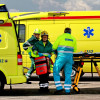
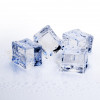
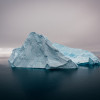
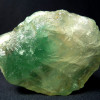
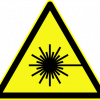
Comments
Add a comment